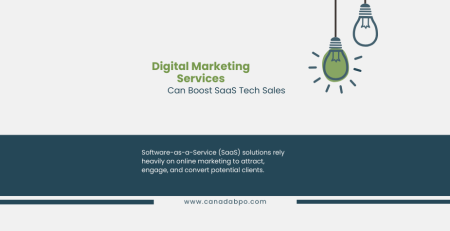In today’s competitive business landscape, having a solid product or service is no longer enough. Success hinges on how well you position your brand in the market and how effectively you target the right audience. Positioning and targeting are two critical components of a marketing strategy that work hand in hand to ensure your brand resonates with the right consumers. In this blog post, we’ll explore the concepts of positioning and targeting, their importance, and how to use them to craft a winning marketing strategy.
What is Positioning in Marketing?
Positioning refers to how your brand is perceived in the minds of your target audience. It’s the unique place your product or service occupies in the marketplace and the message you convey to distinguish yourself from competitors. Effective positioning is about creating a clear, consistent, and compelling identity for your brand that sets you apart from the competition.
Positioning answers the key question: Why should customers choose your brand over others?
Examples of positioning strategies include:
- Price Positioning: Marketing your product as the most affordable option, like Walmart.
- Quality Positioning: Highlighting superior quality, like Apple does with its technology products.
- Niche Positioning: Focusing on a specialized segment of the market, such as Tesla with electric vehicles.
The Importance of Positioning
Effective positioning is crucial for several reasons:
- Differentiation: In crowded markets, standing out is essential. Positioning helps differentiate your brand from competitors, making it easier for consumers to understand what makes your offering unique.
- Brand Identity: Positioning shapes your brand’s identity, influencing how consumers perceive your product or service. It defines the emotional connection customers have with your brand.
- Customer Loyalty: When customers resonate with your brand’s position, they are more likely to become loyal advocates. A strong position can lead to long-term customer relationships and repeat business.
- Competitive Advantage: Proper positioning gives you an edge over competitors. By staking a claim in the market that resonates with your target audience, you create a stronghold that competitors find difficult to penetrate.
What is Targeting in Marketing?
Targeting involves identifying and focusing your marketing efforts on specific segments of the population that are most likely to be interested in your product or service. Targeting ensures that your marketing messages are delivered to the right people—those who are most likely to convert into customers.
Instead of a one-size-fits-all approach, targeting allows you to tailor your marketing strategies to different audience segments based on factors like demographics, behavior, interests, and needs.
Examples of targeting strategies include:
- Demographic Targeting: Marketing to specific age groups, genders, or income levels, such as a luxury watch brand targeting affluent men aged 35-50.
- Psychographic Targeting: Focusing on lifestyles, values, or attitudes, like a fitness brand targeting health-conscious individuals who value wellness.
- Behavioral Targeting: Targeting based on consumer behavior, such as a travel company marketing to people who frequently book vacations.
The Importance of Targeting
Targeting is essential for maximizing marketing efficiency and effectiveness. Here’s why:
- Improved ROI: By focusing on the most relevant audience segments, you reduce wasted marketing efforts and increase the likelihood of conversions, leading to a better return on investment.
- Personalized Marketing: Targeting allows you to create personalized messaging and offers that resonate with specific groups, making your marketing efforts more relevant and engaging.
- Efficient Resource Allocation: With targeting, you can allocate your marketing budget and resources more effectively by focusing on the segments that offer the highest potential for returns.
- Enhanced Customer Satisfaction: When your messaging speaks directly to the needs and desires of your target audience, they feel understood and valued, leading to higher satisfaction and loyalty.
How Positioning and Targeting Work Together
Positioning and targeting are interconnected. Targeting defines who your audience is, and positioning determines how you want to be perceived by that audience. Together, they form the foundation of a successful marketing strategy.
- Identify Your Target Audience: The first step is to clearly define your target audience. Who are the people most likely to benefit from your product or service? Segment your audience based on demographics, psychographics, and behaviors.
- Develop Your Positioning Strategy: Once you have identified your target audience, craft a positioning strategy that resonates with them. What unique value does your product offer to this specific audience? How do you want them to perceive your brand?
- Align Your Messaging: Your messaging should align with your positioning and speak directly to your target audience. Tailor your marketing communications to address their specific needs, pain points, and aspirations.
- Consistency is Key: Ensure that your positioning and targeting remain consistent across all marketing channels. Whether it’s on your website, social media, or in advertising campaigns, a consistent message strengthens your brand identity and reinforces your position in the market.
Examples of Successful Positioning and Targeting
- Nike: Nike’s positioning as a brand that empowers athletes to “Just Do It” resonates with a broad target audience of sports enthusiasts, from professional athletes to casual runners. By targeting active individuals who value performance and motivation, Nike has become a global leader in sportswear.
- Starbucks: Starbucks positions itself as a premium coffee brand that offers more than just coffee; it provides a community experience. By targeting urban professionals and coffee lovers who value quality and ambiance, Starbucks has built a loyal customer base that extends beyond just coffee consumption.
- Tesla: Tesla’s positioning as an innovative electric car manufacturer appeals to environmentally conscious consumers and tech enthusiasts. By targeting affluent individuals who value sustainability and cutting-edge technology, Tesla has established itself as a leader in the electric vehicle market.
Positioning and targeting are crucial elements of any successful marketing strategy. By clearly defining your target audience and crafting a unique position in the marketplace, you can create a brand that resonates with consumers and stands out from the competition.
Remember, effective positioning and targeting aren’t static—they require ongoing analysis and refinement. As markets evolve and consumer preferences shift, your brand’s positioning and targeting strategies should adapt to stay relevant and competitive.
Master these two essential components, and you’ll be well on your way to building a strong, memorable brand that connects with the right audience and drives long-term success.










